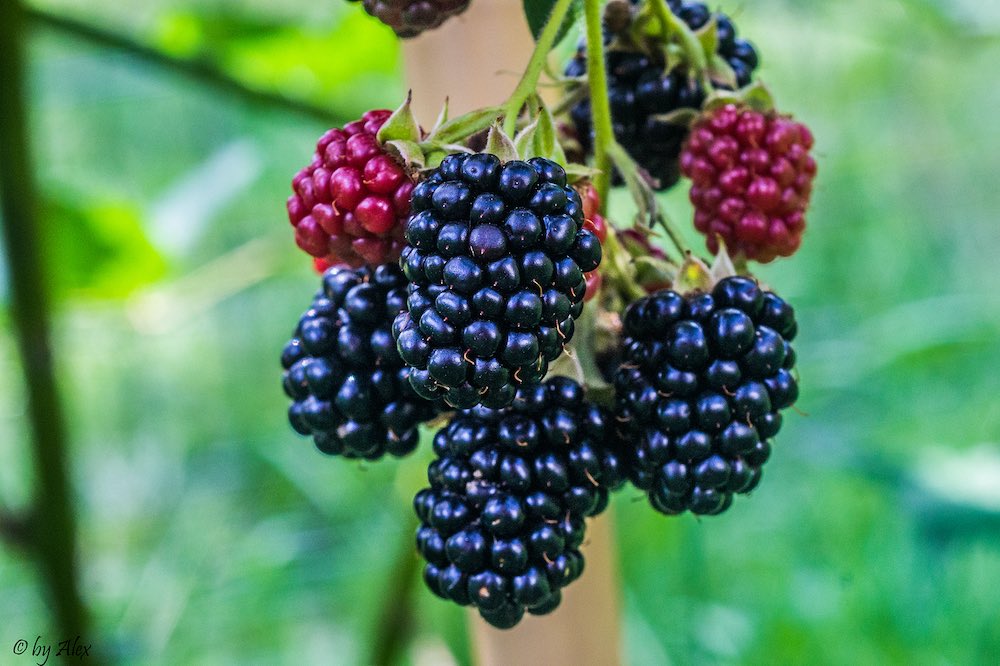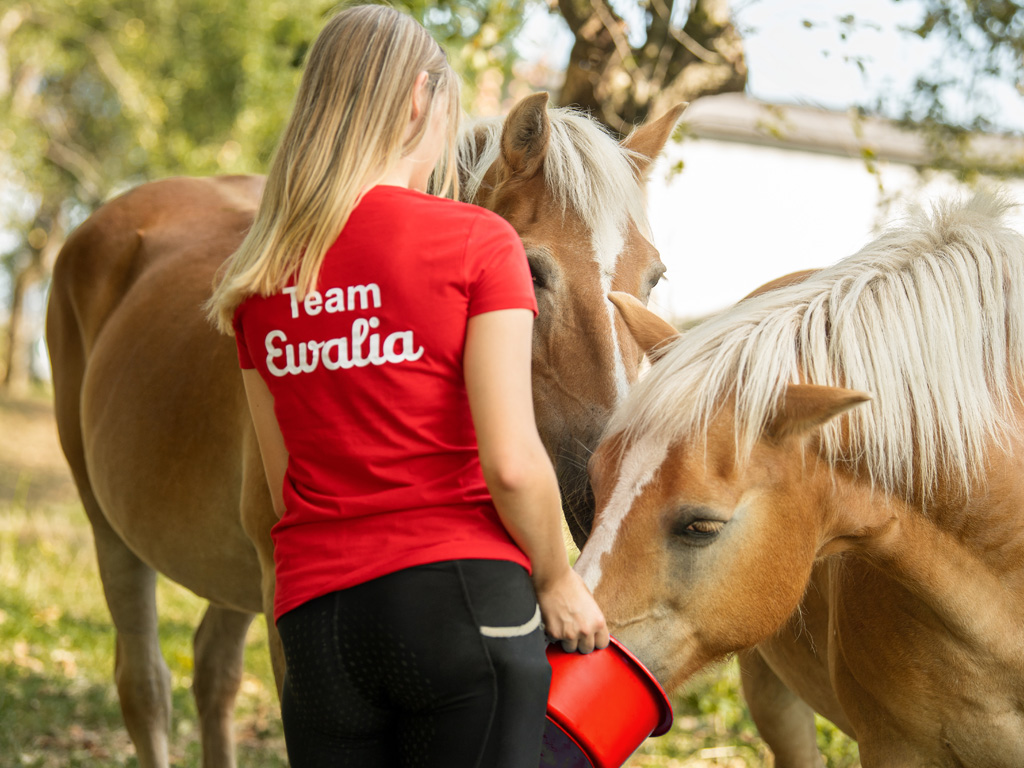Blackberries

Who doesn't love sweet juicy blackberries (Rubus fruticosus)? Blackberry plants grow in many places and make wonderful hedgerows. This prickly bush forms long stems and can reach a height of up to 3 metres. The fruits contain dextrose, fruit acids, and anthocyanins. Blackberries are a popular food. The fresh fruits are healthy to eat and are considered a superfood. Blackberries are also important in phytotherapy: not the sweet fruits, but the leaves and roots.
Origin and appearance of the blackberry
The blackberry is part of the rose family. Its inclusion in the genus Rubus makes it closely related to raspberry, dewberry and cloudberry plants. There are several thousand blackberry species worldwide. These prickly bushes form long, sometimes woody stems every one to two years. Some of the branches remain green through the winter and shed their pinnate leaves in spring when they put forth new flower buds. Like other plants of the rose family, they begin to flower in May. Green aggregate fruits form from the panicled inflorescences. These first turn red and then black as they mature. After the fruits mature in autumn, the fruit-bearing stems die off. The long, twining main stems survive the winter and start the next generation.
Blackberry leaves - ingredients, use and effect
Blackberry leaves contain lots of tannins, organic acids like ascorbic acid, succinic acid, malic acid, citric acid, and flavonoids. They have astringent properties and are used to make teas to treat acute diarrhoea as well as oral rinses for mouth and throat inflammations. The use of blackberry leaves to treat non-specific diarrhoea and, due to its tannins, minor mucous membrane inflammations has been medically recognised by Germany's Commission E. The Commission E also reviewed the use of blackberry root in folk medicine as a preventive against dropsy. This application, however, was given a negative evaluation, as no actual medicinal effect could be proven. The European Scientific Cooperative on Phytotherapy (ESCOP) has not yet carried out an assessment. Nor has the Herbal Medicinal Product Committee (HMPC) classified blackberry leaves as a traditional herbal medicine. A review in this regard is still currently pending. The quality of blackberry leaves (Rubi fruticosi folium) as a pharmaceutical drug is regulated in the German Pharmaceutical Codex (DAC).
Blackberry leaves as a home remedy
The young leaves are collected in May and June before they form berries. Boiling water is poured over the fresh or dried leaves and allowed to steep for 10 minutes. The tea can be imbibed warm several times a day between meals as well as used for gargling or as a mouthwash. Commercially sold blackberry leaves come predominantly from wild harvests and are sold dried or fermented. Fermented, they are considered a domestic substitute for black tea. Tea from blackberry leaves is highly suitable as a "house tea" or breakfast tea. In folk medicine, blackberry leaves are also considered to have purifying, diuretic, mucolytic and generally tonic effects. Watery infusions are considered to have astringent, antibacterial, antiviral, anti-inflammatory and haemostatic properties due to their tannin content.
Blackberry leaves for pet and horse
Blackberry's applications in veterinary medicine are similar to those in human medicine. Of particular note is its use as an internally taken remedy for non-specific diarrhoea. For large animals like horses, prepare an infusion or a decoction for internal administration from 6 to 10 g blackberry leaves with a half litre of boiling water. Alternatively, two handfuls of chopped blackberry leaves can be added to the drinking water of cows and horses. Blackberry leaves are also well tolerated by dogs and other smaller animals.
Sources
- http://www.koop-phyto.org/arzneipflanzenlexikon/brombeere.php
- https://www.pharmawiki.ch/wiki/index.php?wiki=Brombeere
- https://de.wikipedia.org/wiki/Brombeeren
- https://buecher.heilpflanzen-welt.de/BGA-Kommission-E-Monographien/rubi-fruticosi-folium-brombeerblaetter.htm
- https://buecher.heilpflanzen-welt.de/BGA-Kommission-E-Monographien/rubi-fruticosi-radix-brombeerwurzel.htm
- Heilpflanzenkunde für die Veterinärpraxis (Springer ISBN 978-3-662-48794-5)
- Wichtl Teedrogen und Phytopharmaka (IABN 978-3-8047-3521-7)














